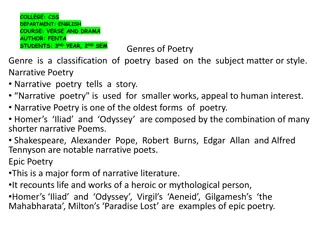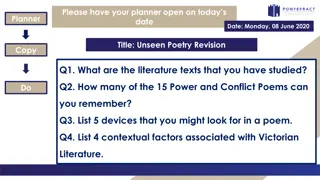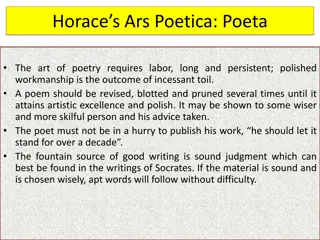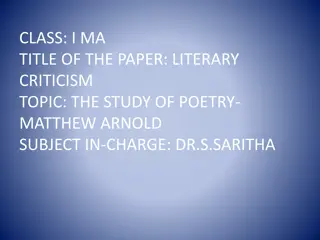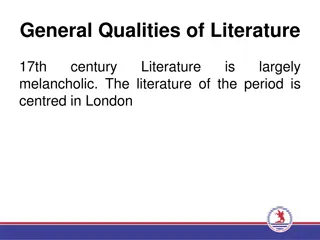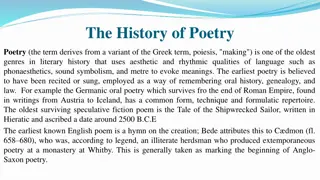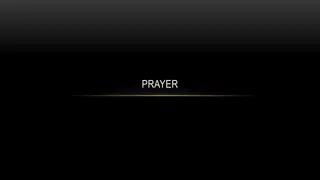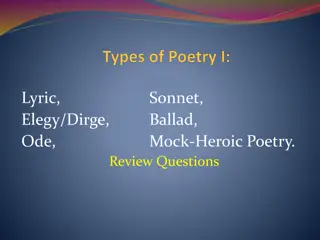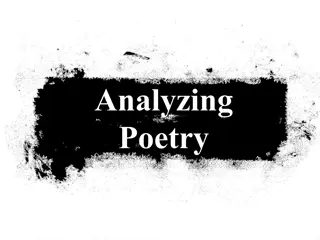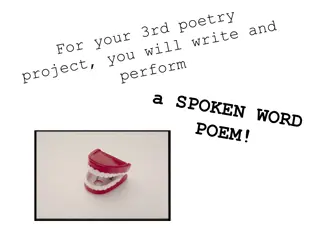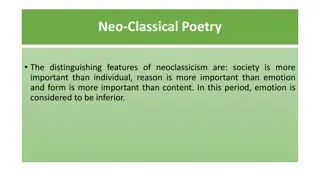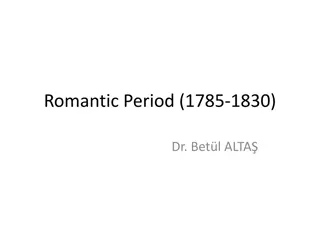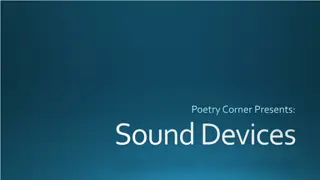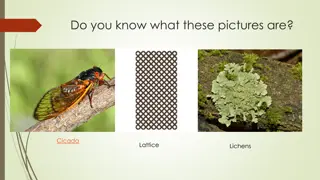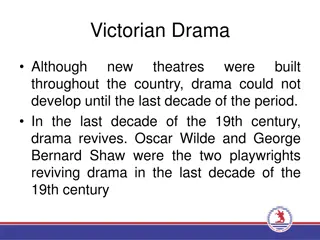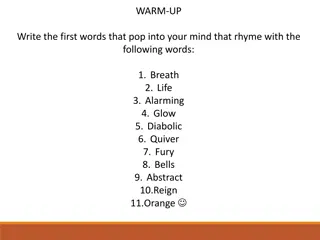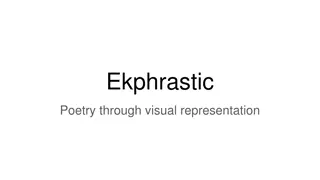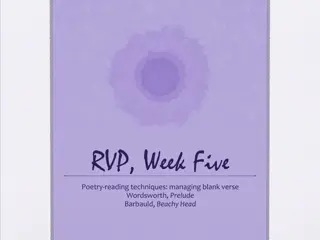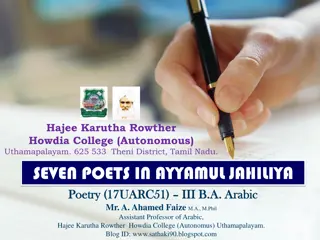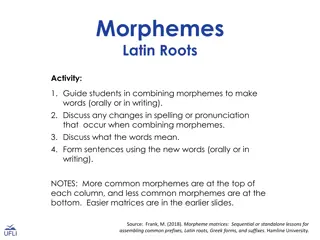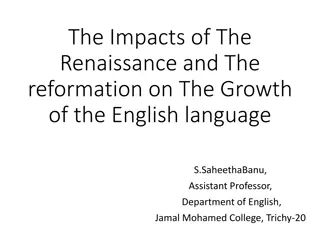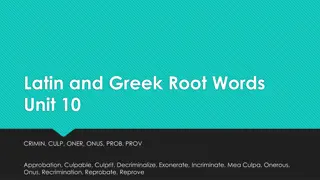Understanding Dactylic Hexameter in Latin Poetry
Latin poetry employs a rhythmic structure known as meter to enhance meaning and poetic effect. Particularly, dactylic hexameter is a prevalent meter in ancient epic poetry, consisting of six feet predominantly made up of dactyls—a long syllable followed by two short syllables. Scanning dactylic hexameters involves identifying long and short syllables based on vowel quantities and patterns. Various factors, such as the presence of diphthongs and liquid consonants, influence the syllable lengths in this poetic form.
Download Presentation

Please find below an Image/Link to download the presentation.
The content on the website is provided AS IS for your information and personal use only. It may not be sold, licensed, or shared on other websites without obtaining consent from the author. Download presentation by click this link. If you encounter any issues during the download, it is possible that the publisher has removed the file from their server.
E N D
Presentation Transcript
Introduction to Meter & Scansion
Meter & Dactylic Hexameter all Latin poetry was written in meter, or a particular rhythm determined by the combination of long and short syllables in a line of poetry meter is used to convey meaning and add effect to poetry there are many popular meters used by the ancient poets the epic poets wrote in a meter called dactylic hexameter, so-called because it is made up of six feet (hexa = six) primarily consist of dactyls, a measure of meter consisting of the vowel pattern long-short-short ( u u )
Scanning Dactylic Hexameters dactylic hexameter verses all consist of SIX feet the first four feet may be dactyls ( u u ) or spondees ( ) in any combination pace is quicker with dactylic lines, slower with spondeic the fifth foot is always a dactyl ( u u ) the sixth foot is either be a spondee ( ) or trochee ( u ) [you can scan the sixth foot x ] divisions between feet are marked with a straight line ( | ) so, a dactylic hexameter line scanned looks like this: U U | U U | U U | U U | U U | U
Determining Vowel Quantities to scan dactylic hexameters, you will need to figure out the quantity (long or short) of every syllable in the line quantity of the syllable is determined by the vowel(s) in that syllable the syllable scans long ( ) 1. if it s long by nature: e.g. in 1stdecl. abl. sg., - in 3rdPP 2. if it s long by position: if it precedes two or more consonants note that consonantal i (Tr ia), x, and z all count as 2 consonants digraphs (2 letter combinations that form a single sound) count as single consonants ch, ph, th, qu, gu, and sometimes su h is silent and does not affect a preceding vowel s quantity
Determining Vowel Quantities to scan dactylic hexameters, you will need to figure out the quantity (long or short) of every syllable in the line quantity of the syllable is determined by the vowel(s) in that syllable the syllable scans long ( ) 3. if it s a diphthong (two vowels written together that produce a single sound): AE (saepe), AU (aurum), EI (deinde), EU (seu), OE (moenia), UI (cui, huius) note: not all such vowel combinations are diphthongs (e.g. fuit, senatui, etc.) all syllables/vowels that do not scan long are considered short
Contributing Factors 1: Liquid LetteRs when the consonants P, B, T, K, D, C, G, Q are followed by the letters L or R, the preceding vowel may be either long or short depending on the needs of the meter Peanut Butter Tastes Krazy Delicious Cuz (of) Good Quality e.g.: PATREM may scan either P TR M or P TR M
Contributing Factors 2: Elision & Hiatus elision is the omission of a sound or syllable when speaking; this occurs in poetry when two vowels in different words come up against one another Elision occurs if 1. one word ends in a vowel or diphthong and the next begins with a vowel; drop the initial vowel/diphthong (tempore in = temporin; agricolae adiuvant = agricoladiuvant) 2. one word ends with a vowel or diphthong and the next one begins with H; drop the initial vowel/diphthong (atque h c = atqu c) 3. one word ends in UM, AM, or EM and the next word begins with a vowel; drop the _M syllable (quem ab = quab) *Note that the syllable always scans according to the SECOND vowel* **Sometimes in such cases, elision will not occur; this is called HIATUS (the deliberate avoidance of elision)**
Strategies for Scanning 1. Identify all elisions first and mark them: 1. slash out elided syllable ( / ) 2. join the two words together ( ) 2. Start at the end of the line: 1. the 6th foot is always 2 syllables ( u, , x ) 2. the 5th foot is always a dactyl ( u u ) 3. Go back to the beginning and start scanning the remaining four feet 1. Remember that the first foot will always be long ( ) 2. Make sure you end up with SIX total feet 4. Read the line aloud, stressing the long syllables so that you can hear the effect of the meter (
Try It Out Write out & scan the following lines: monstrum horrendum informe ingens cui lumen ademptum unde hominum genus et pecudes; unde imber et ignes per tot ducta viros antiqua ab origine gentis



